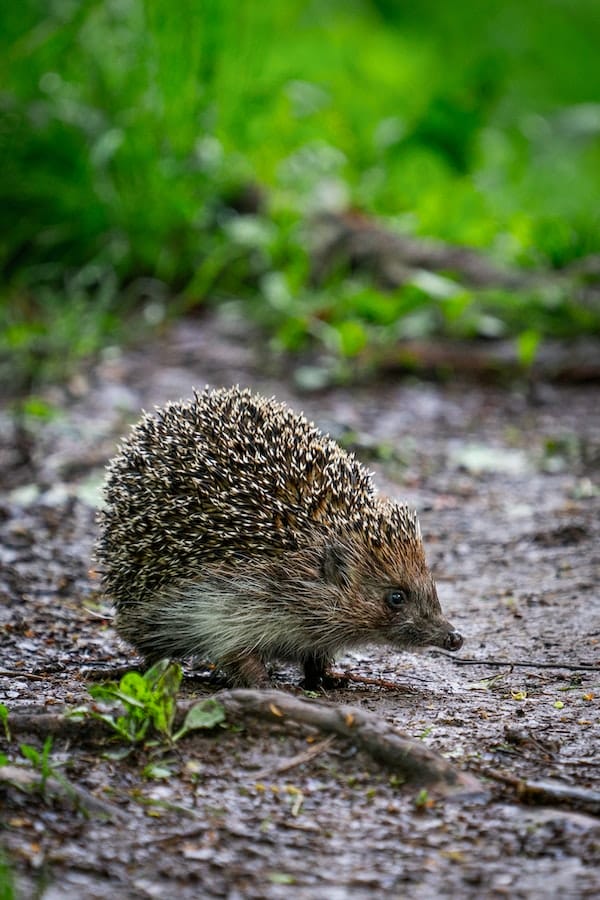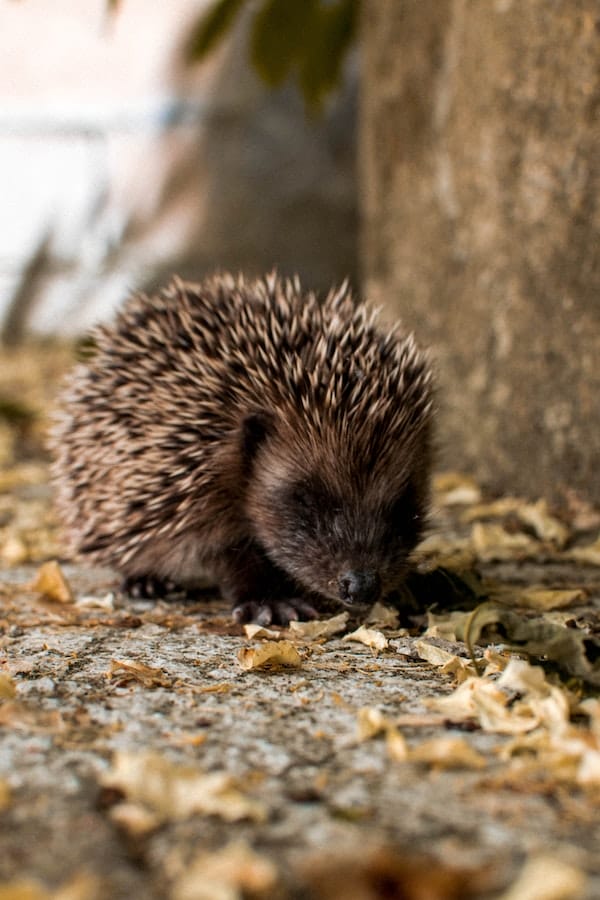
Hedgehogs are small, spiny mammals found throughout Europe, Asia, and parts of Africa.
They are an intriguing species due to their unique physical appearance and behavior.
These fascinating creatures have become increasingly popular as pets in recent years thanks to their playful personalities and intelligence.
Here are a few interesting facts about hedgehogs that you may not know.
Fact #1: Hedgehogs are nocturnal animals.
Hedgehogs are primarily active at night, which is why they’re referred to as nocturnal animals.
They spend the daytime hours snoozing and become more active during twilight – usually around non-light hours of 4 p.m. to 8 a.m.
During these periods, hedgehogs will forage for food and explore their surroundings.
Nocturnal behavior benefits hedgehogs because they are less likely to be seen by predators during these times.
They also spend much of their day in a state of torpor, where they conserve energy and sleep deeply for several hours at a time.
Fact #2: Hedgehogs have a keen sense of smell.
Hedgehogs possess an impressive sense of smell, which they use to detect prey, locate food sources, and find their way home.
They can identify scents that may be up to two miles away, and their noses are so sensitive that they can detect the presence of predators.
In addition to their sense of smell, hedgehogs also have a heightened sense of hearing, which helps them pick up on approaching danger.
With these two senses combined, hedgehogs can maneuver through their environment with great accuracy and efficiency.
Fact #3: Hedgehogs have a natural defense mechanism.

When threatened, hedgehogs instinctively curl up into a tight ball with their spines facing outwards.
This defensive pose helps protect them against predators, as it is difficult for other animals to bite through their spikes.
Another interesting defense mechanism is the secretion of a strange yellow fluid from special glands beneath the skin.
This fluid smells foul and helps repel predators, allowing hedgehogs to escape quickly and safely.
Hedgehogs also have very strong claws, which they use for digging burrows and digging up insects for food.
All of these defense mechanisms give hedgehogs a unique advantage in the wild.
Fact #4: Hedgehogs can run up to 6.2 miles per hour.
Despite their small size and short legs, hedgehogs are surprisingly fast runners.
They can reach speeds of up to 6.2 miles per hour, which is faster than the average human walking pace!
This speed helps hedgehogs escape from predators and find food quickly.
In addition to their running ability, hedgehogs are excellent climbers and swimmers.
They use their sharp claws to scale walls and trees, and their streamlined bodies make them excellent swimmers.
With their agility and speed combined, hedgehogs can move quickly throughout their environment with ease.
Fact #5: Hedgehogs are omnivores.
Hedgehogs are omnivores, meaning they feed on both plants and other animals. Their diet consists mainly of insects, earthworms, slugs, snails, fruits, and berries.
They also occasionally eat small rodents and frogs.
Hedgehogs can store food in their cheek pouches and transport it back to their burrow for later consumption.
Foraging for food can be quite a task for these spiny critters, as they need to locate their prey in the dark and avoid predators simultaneously.
However, with their keen sense of smell and sharp senses, hedgehogs can find food with relative ease.
Fact #6: Hedgehogs can live up to six years in the wild.
Hedgehogs have a relatively short lifespan, with most living up to five or six years in the wild.
This is due to the fact that they are constantly under threat from predators and environmental hazards.
In captivity, however, hedgehogs can live much longer – some have even been known to reach the ripe old age of 10 years or more!
With proper care and a safe environment, hedgehogs can have a long and healthy life.
- Related post: Best Ways To Name Your Hedgehog
- Related post: Funny And Hilarious Hedgehog Names
Fact #7: Hedgehogs are solitary animals.

In the wild, hedgehogs live alone and only come together to mate during specific times of the year.
They are territorial animals and will fight with each other if their territory is encroached upon.
When living in captivity, it is important to house each hedgehog separately, as they can become stressed when placed together.
Fact #8: Hedgehogs are becoming increasingly popular as pets.
Due to their cute, spiny appearance and docile nature, hedgehogs have become an increasingly popular pet choice in recent years.
They can make affectionate and loyal companions, but they require special care and attention.
Hedgehogs need a temperature-controlled environment with plenty of hiding spots and a steady supply of food.
They also need regular exercise and socialization, as they can become stressed if left alone for too long. With the proper care, hedgehogs can be wonderful additions to any home.
Fact #9: Hedgehogs are found in many parts of the world.
Hedgehogs can be found in many parts of the world, including Europe, Asia, Africa, and Australia.
They prefer warm climates and habitats with plenty of vegetation for foraging.
Hedgehogs have also been successfully introduced to some islands off the coast of mainland Britain and Ireland, where they have flourished in the wild.
Fact #10: Hedgehogs symbolize good luck in some cultures.
In many cultures around the world, hedgehogs are seen as a symbol of good luck and prosperity.
In Europe, they have been associated with fertility and protection against evil spirits.
In Japan, it is believed that encountering a hedgehog brings good fortune and success in business. In Africa, they are seen as a representation of courage and strength.
Fact #11: Hedgehogs are important to their ecosystems.

Hedgehogs play an important role in maintaining the balance of their ecosystem by controlling pest populations and dispersing seeds.
Without them, some areas may become overrun with destructive pests like beetles or slugs, leading to decreased crop yields and other plants.
By consuming these pests, hedgehogs help to keep the environment healthy and thriving.
Fact 12: Hedgehogs are listed as vulnerable species on the IUCN Red List.
Due to the destruction of their habitat, predation, and other factors, hedgehogs are considered vulnerable species by the International Union for Conservation of Nature (IUCN).
Their numbers have been declining in many areas and conservation efforts are being put in place to help protect these species from further decline.
Overall, hedgehogs are fascinating creatures with many unique features.
With their strong sense of smell, sharp hearing, defensive spines, agility, and omnivorous diet, they are well adapted to survive in the wild.
It is essential that we take care to protect these animals and their habitats so that future generations can continue to enjoy them.


GIPHY App Key not set. Please check settings